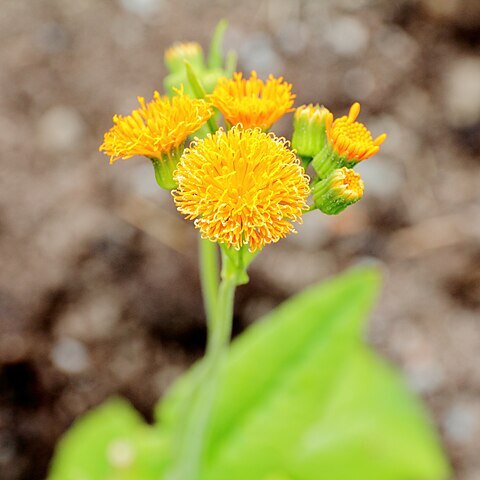Erect, seasonal herb, 1-5 dm tall, glabrous to lightly pilose; taproot present. Leaves alternate, the middle and lower cauline leaves ovate to oblanceolate in outline, but variously toothed or lobed to subentire, the teeth callose-tipped, the uppermost leaves reduced to bracts. Inflorescence of 1 to several loose, few-headed, corymbiform cymes, arising terminally or laterally in the axils of the upper leaves. Heads discoid, urceolate to turbinate, robust, ca. 1'/2 times longer than wide, the florets prominently exserted to about ? their length beyond the involucre; involucral bracts ca. 13, linear, 6-9 mm long; receptacle flat to convex; florets with corollas scarlet to red-orange or orange. Achene brown to reddish-tan, narrowly rapiform, 3-4 mm long, minutely pubescent along the 10 ribs; pappus of abundant white capillary hairs. Chromosome number n = 5.
A herb. It grows about 30-100 cm high. It has weak stems. They are hairy in the lower parts. The leaves are often purple underneath. The lower leaves are spoon shaped and 12 cm long by 5 cm wide. Higher leaves are 20 cm long by cm wide and do not have a leaf stalk. The flowers can be yellow, orange or red. They are showy and in compact heads. These are on long stalks at the top of the plant. The fruit is dry and 2-5 mm long.
A straggling glaucous sparingly pubescent herb with weak stems up to about 3 ft. long
Florets deep yellow in long-stalked heads about 1/2 in. long
Leaves often purple beneath

